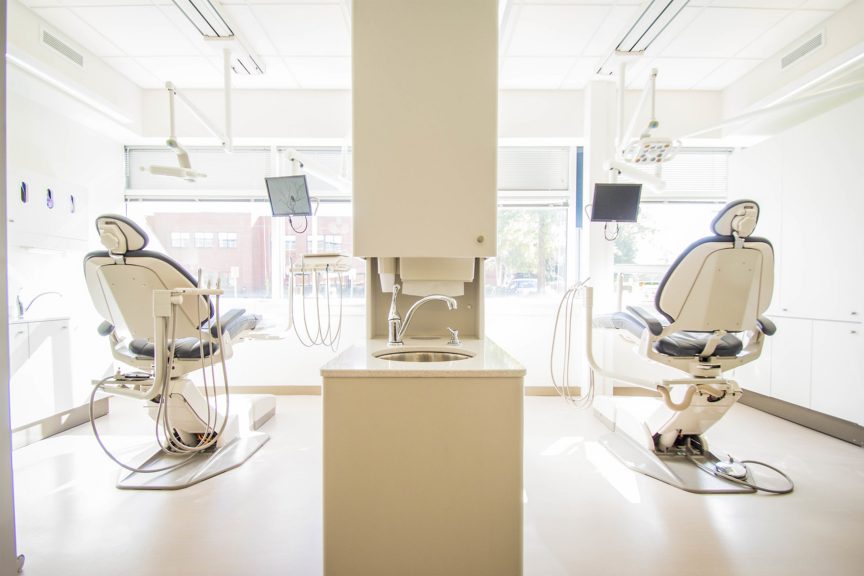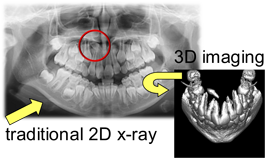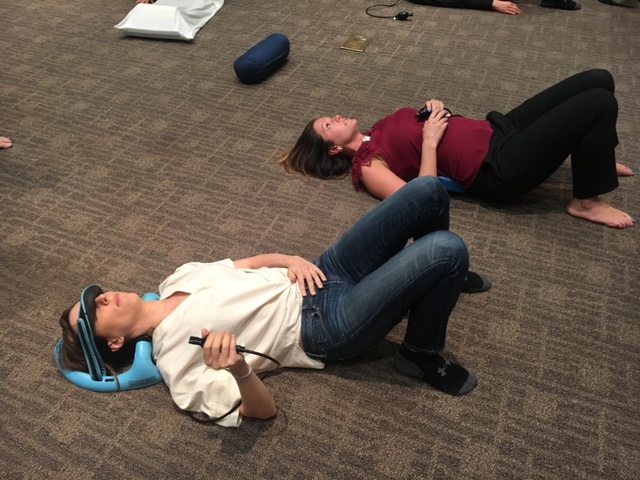
There aren’t any studies that show people who get root canals have a higher risk of cancer. In fact, research on the link between cancer and endodontic procedures like root canals shows that people who have had these treatments have a lower risk of certain cancers.
The danger of these claims is that these fears can crowd out other real cancer risks or health concerns. Viewers may focus on previously completed root canals while ignoring well known risk factors for cancer or infection, including smoking, weight gain, and failing to get the right cancer screening tests on time. To be blunt, even if there is some truth to this whole idea, your old root canal is probably not harming your body nearly as much as your bleeding gums, cigarette smoking, or undiagnosed sleep disorder. Illness is cumulative, so it’s important to focus on the bigger concerns first when working towards optimal health and well-being.
HOWEVER, there is one very important thing that the documentary ROOT CAUSE gets right! There are many patients walking around with active infection in their tooth roots and bone who have ABSOLUTELY NO IDEA that there is any problem whatsoever. We know this is true because we have advanced 3D imaging that allows us to routinely see infections in the tooth and bone that simply cannot be seen in traditional dental X-rays and are asymptomatic.

Because of this, we have been able to help countless patients get rid of active infection in their body quickly and easily. The first step to health is accurate and actionable diagnosis!
In looking at documentaries and other health related information on the internet, it’s important to remember a phrase we often share with our patients:
“Everything on the internet is somewhat right for some people.”
BOTTOM LINE: The most important thing is that you find a provider that you trust who will help you navigate through all the conflicting information out there, and who will have an in depth understanding of your individual circumstances in order to provide you customized advice on how to get and stay healthy.
While root canals can’t save every tooth, leaving the natural tooth intact helps maintain the jawbone’s original structure. Without the original tooth, the surrounding jawbone that once supported it will eventually break down, affecting a person’s appearance and their ability to chew.

 Let’s be real here: We know that visiting the dentist can be something that makes many patients nervous. Research shows that 20% of individuals who experience severe anxiety will only go to the dentist if absolutely necessary.
However, regular dental checkups are vital not only because they keep your teeth and gums healthy, but they can also help protect and maintain your overall health and well-being.
Downtown Dental is sensitive to the fears and concerns of our Nashville dental patients and we strive to create a comfortable environment for all patients, no matter their personal concerns. If the idea of visiting the dentist gives you anxiety, consider a few reasons why Dr. Clark's office can help ease your fears:
We listen.
We invite you to express your worries from the very first moment you call to book an appointment. Our team makes your concerns our concerns. Whether you’ve had a bad experience in the past, are afraid of needles, or are apprehensive about any specific part of your appointment, let’s discuss it. We promise to listen carefully to get a full understanding of how you feel.
Let’s be real here: We know that visiting the dentist can be something that makes many patients nervous. Research shows that 20% of individuals who experience severe anxiety will only go to the dentist if absolutely necessary.
However, regular dental checkups are vital not only because they keep your teeth and gums healthy, but they can also help protect and maintain your overall health and well-being.
Downtown Dental is sensitive to the fears and concerns of our Nashville dental patients and we strive to create a comfortable environment for all patients, no matter their personal concerns. If the idea of visiting the dentist gives you anxiety, consider a few reasons why Dr. Clark's office can help ease your fears:
We listen.
We invite you to express your worries from the very first moment you call to book an appointment. Our team makes your concerns our concerns. Whether you’ve had a bad experience in the past, are afraid of needles, or are apprehensive about any specific part of your appointment, let’s discuss it. We promise to listen carefully to get a full understanding of how you feel.
 We give you all the information and discuss solutions.
Dr. Clark and our team will share with you a full range of options and information so you can make an educated decision about your personal treatment. We will not rush you into a decision you’re not comfortable with.
Additionally, we offer safe, effective dental sedation that has helped other patients like you overcome their dental fears. There are several options available; our team will be happy to discuss the solution that’s right for you and your treatment.
We give you all the information and discuss solutions.
Dr. Clark and our team will share with you a full range of options and information so you can make an educated decision about your personal treatment. We will not rush you into a decision you’re not comfortable with.
Additionally, we offer safe, effective dental sedation that has helped other patients like you overcome their dental fears. There are several options available; our team will be happy to discuss the solution that’s right for you and your treatment. Our patients often ask us about oil pulling, or ‘swishing’: it’s an alternative treatment purported to rid your body of unwanted bacteria through the process of swishing vegetable oil (mostly coconut oil) around your mouth. Those who swear by the process claim that it whitens teeth, fights bad breath, and gets rid of bacteria stuck in hard to reach places.
We totally support alternative wellness, even when it comes to your teeth. Understand that oil pulling may sound like a great alternative oral care solution, but it can never replace brushing and flossing. Here's some real talk about oil pulling and how we think it can be beneficial:
What is oil pulling?
The process of oil pulling involves putting a tablespoon of liquid vegetable oil, often coconut oil, into your mouth and swishing it around for 20 minutes before spitting it out and brushing it away with a toothbrush and toothpaste. The process gets its name partly from the pushing and pulling of the oil through teeth and mouth, and partly from the way the oil is supposed to pull icky stuff out of your mouth tissues.
The longer you push and pull the oil through your mouth, the more microbes are pulled free. The oil needs to be swished around long enough for it to turn a milky white, which indicates that the bacteria has been "pulled" off. After roughly 20 minutes the solution is filled with bacteria, viruses and other organisms; at this point, the person spits out the oil and rinses thoroughly with water.
How does oil pulling work?
The number of bacteria found in our mouths is usually between 1,000 and 10,000 on each individual tooth. It may sound like a lot, but these guys are tiny! Each of these bacteria have a fatty outer coating, and when they come into contact with another fatty substance, such as oil, they have a tendency to stick to that substance. Since liquid oil has the ability to get into hard to reach areas of the mouth that a toothbrush would miss, it is thought to be able to pick up bacteria that may have otherwise stayed hidden.
People that “oil pull” state that it has helped whiten their teeth, alleviate halitosis, and even reduce gingivitis. In many cases, people also claim that it helps “prevent” cavities, as well as relieve gum and tooth sensitivity.
What we believe
There is clear evidence that many diseases and conditions are influenced by the mouth’s ecology and bacteria, and we understand the topic of oil pulling is valid when patients wonder why oil pulling has been encouraged by dental professionals as a supplemental therapy for patients, especially if we are in the business of “preventing” oral health problems.
We support holistic approaches to your oral care. You just have to be smart about it and consider your individual dental health: there are certain types of infections that oil pulling will not resolve, and you have to be aggressive about treating those. It won’t take away raging gum infections or cavities. Oil pulling may remove bacteria, but it doesn't kill bacteria, and that's a big difference.
BOTTOM LINE
If oil pulling is used alone, without regular brushing and flossing, then no, it is not an effective way to keep your mouth healthy. It will not heal existing decay. However, when used in conjunction with proper daily brushing and flossing habits as a preventive measure, it may improve bad breath, help to decrease staining, and benefit in other ways. If you have dry mouth issues, we absolutely believe pre-bedtime oil pulling can be helpful.
Our patients often ask us about oil pulling, or ‘swishing’: it’s an alternative treatment purported to rid your body of unwanted bacteria through the process of swishing vegetable oil (mostly coconut oil) around your mouth. Those who swear by the process claim that it whitens teeth, fights bad breath, and gets rid of bacteria stuck in hard to reach places.
We totally support alternative wellness, even when it comes to your teeth. Understand that oil pulling may sound like a great alternative oral care solution, but it can never replace brushing and flossing. Here's some real talk about oil pulling and how we think it can be beneficial:
What is oil pulling?
The process of oil pulling involves putting a tablespoon of liquid vegetable oil, often coconut oil, into your mouth and swishing it around for 20 minutes before spitting it out and brushing it away with a toothbrush and toothpaste. The process gets its name partly from the pushing and pulling of the oil through teeth and mouth, and partly from the way the oil is supposed to pull icky stuff out of your mouth tissues.
The longer you push and pull the oil through your mouth, the more microbes are pulled free. The oil needs to be swished around long enough for it to turn a milky white, which indicates that the bacteria has been "pulled" off. After roughly 20 minutes the solution is filled with bacteria, viruses and other organisms; at this point, the person spits out the oil and rinses thoroughly with water.
How does oil pulling work?
The number of bacteria found in our mouths is usually between 1,000 and 10,000 on each individual tooth. It may sound like a lot, but these guys are tiny! Each of these bacteria have a fatty outer coating, and when they come into contact with another fatty substance, such as oil, they have a tendency to stick to that substance. Since liquid oil has the ability to get into hard to reach areas of the mouth that a toothbrush would miss, it is thought to be able to pick up bacteria that may have otherwise stayed hidden.
People that “oil pull” state that it has helped whiten their teeth, alleviate halitosis, and even reduce gingivitis. In many cases, people also claim that it helps “prevent” cavities, as well as relieve gum and tooth sensitivity.
What we believe
There is clear evidence that many diseases and conditions are influenced by the mouth’s ecology and bacteria, and we understand the topic of oil pulling is valid when patients wonder why oil pulling has been encouraged by dental professionals as a supplemental therapy for patients, especially if we are in the business of “preventing” oral health problems.
We support holistic approaches to your oral care. You just have to be smart about it and consider your individual dental health: there are certain types of infections that oil pulling will not resolve, and you have to be aggressive about treating those. It won’t take away raging gum infections or cavities. Oil pulling may remove bacteria, but it doesn't kill bacteria, and that's a big difference.
BOTTOM LINE
If oil pulling is used alone, without regular brushing and flossing, then no, it is not an effective way to keep your mouth healthy. It will not heal existing decay. However, when used in conjunction with proper daily brushing and flossing habits as a preventive measure, it may improve bad breath, help to decrease staining, and benefit in other ways. If you have dry mouth issues, we absolutely believe pre-bedtime oil pulling can be helpful.
 Teeth whitening can help brighten up a dingy smile. There are many possible choices, from professional whitening in a dentist's office to do-it-yourself kits. Whatever you choose, it's important to get the facts ahead of time. Not everything you hear about teeth whitening is true. Check out these debunked myths.
Myth #1: It's too expensive.
The truth is teeth whitening doesn't have to cost a fortune. At-home tooth whitening is usually more affordable than the professional whitening your dentist does. But that doesn't mean all professional whitening will be out of your budget. Teeth-whitening kits run about $100. In-office professional whitening costs an average of $650. Costs vary widely, though. Some versions can cost as much as $3,500. Your dentist can set you up with at-home whitening trays for about $350.
Myth #2: It will make my teeth too sensitive.
Teeth-whitening solutions in teeth-whitening kits sometimes do make teeth more sensitive, but it’s not a permanent side effect. The bleaching solution may cause mild irritation to your gums as well. That's also temporary. And, there are ways to deal with this so you can still whiten your teeth. Wear the teeth-whitening trays or strips for a shorter amount of time. If you're supposed to apply the solution for an hour, do it in two 30-minute sessions. Take a break for a few days after you first start whitening your teeth. Also, use a toothpaste for sensitive teeth.
Myth #3: It can work for anyone.
Teeth-whitening solutions cannot always get teeth bright white—even if you opt for the pricey in-office whitening treatments. Whitening treatments don't work on dentures, veneers, caps, crowns or fillings. Teeth stained gray or blue, often from medications or trauma, might not whiten. Teeth stained brown might not whiten completely. But, teeth that are yellowish in color usually whiten the best. Talk to your dentist about whether your teeth are likely to respond well to whitening.
Myth #4: I just need to do it once.
Most teeth-whitening treatments need touch-ups. Professional treatments done in a dentist's office may last up to three years. Even then, you may need additional treatments after six months to a year. At-home whitening kits may need more frequent applications. It all depends on your teeth, the whitening solution you use, and your habits. Smoking and drinking coffee can make teeth discolor more quickly, for instance.
Myth #5: You must have the treatment in a dentist's office to get good results.
Not necessarily. Dentists use a concentrated bleaching gel and a light to help whiten teeth. They make sure the amount used is safe and apply something to protect your gums. And, even if you need to repeat the procedure, just one visit can provide results. The American Dental Association has not approved at-home bleaching strips, gel kits, and whitening toothpastes. They may be effective, but it's important to consult your dentist before trying any of them. Ask if a specific teeth-whitening kit would be safe for you. Get some tips to make sure you'll use it correctly.
Learn more about
Teeth whitening can help brighten up a dingy smile. There are many possible choices, from professional whitening in a dentist's office to do-it-yourself kits. Whatever you choose, it's important to get the facts ahead of time. Not everything you hear about teeth whitening is true. Check out these debunked myths.
Myth #1: It's too expensive.
The truth is teeth whitening doesn't have to cost a fortune. At-home tooth whitening is usually more affordable than the professional whitening your dentist does. But that doesn't mean all professional whitening will be out of your budget. Teeth-whitening kits run about $100. In-office professional whitening costs an average of $650. Costs vary widely, though. Some versions can cost as much as $3,500. Your dentist can set you up with at-home whitening trays for about $350.
Myth #2: It will make my teeth too sensitive.
Teeth-whitening solutions in teeth-whitening kits sometimes do make teeth more sensitive, but it’s not a permanent side effect. The bleaching solution may cause mild irritation to your gums as well. That's also temporary. And, there are ways to deal with this so you can still whiten your teeth. Wear the teeth-whitening trays or strips for a shorter amount of time. If you're supposed to apply the solution for an hour, do it in two 30-minute sessions. Take a break for a few days after you first start whitening your teeth. Also, use a toothpaste for sensitive teeth.
Myth #3: It can work for anyone.
Teeth-whitening solutions cannot always get teeth bright white—even if you opt for the pricey in-office whitening treatments. Whitening treatments don't work on dentures, veneers, caps, crowns or fillings. Teeth stained gray or blue, often from medications or trauma, might not whiten. Teeth stained brown might not whiten completely. But, teeth that are yellowish in color usually whiten the best. Talk to your dentist about whether your teeth are likely to respond well to whitening.
Myth #4: I just need to do it once.
Most teeth-whitening treatments need touch-ups. Professional treatments done in a dentist's office may last up to three years. Even then, you may need additional treatments after six months to a year. At-home whitening kits may need more frequent applications. It all depends on your teeth, the whitening solution you use, and your habits. Smoking and drinking coffee can make teeth discolor more quickly, for instance.
Myth #5: You must have the treatment in a dentist's office to get good results.
Not necessarily. Dentists use a concentrated bleaching gel and a light to help whiten teeth. They make sure the amount used is safe and apply something to protect your gums. And, even if you need to repeat the procedure, just one visit can provide results. The American Dental Association has not approved at-home bleaching strips, gel kits, and whitening toothpastes. They may be effective, but it's important to consult your dentist before trying any of them. Ask if a specific teeth-whitening kit would be safe for you. Get some tips to make sure you'll use it correctly.
Learn more about  Over-the-counter pain pills are safer and more effective than prescription opioids for controlling the pain following dental procedures, a review of the evidence has found.
Over-the-counter pain pills are safer and more effective than prescription opioids for controlling the pain following dental procedures, a review of the evidence has found.


 DD Team Members experience the advanced TMJD course with an emphasis in posture, dental orthopedics and upper cervical health in relation the the TMJ.[/caption]
DD Team Members experience the advanced TMJD course with an emphasis in posture, dental orthopedics and upper cervical health in relation the the TMJ.[/caption]
 Because developing good habits at an early age and scheduling regular dental visits helps children get a good start on a lifetime of healthy teeth and gums, February is designated for National Children's Dental Health Month. Now in its 63rd year, this month-long national health observance brings together thousands of dedicated dental professionals, health care providers and others to promote the benefits of good oral health to children and adults, caregivers, teachers and many others.
Untreated dental care remains one of the most prevalent diseases affecting children and young people’s ability to speak, eat, play and socialize. We believe in innovative oral health education so that parents and children understand the impact of sugar on teeth and the importance of a good oral hygiene regime. A few key lessons include:
Teach kids about how sugar impacts their teeth.
We might understand it, but it can be hard for children to understand that the fizzy drinks they’re consuming and the sweets they’re eating are directly impacting their oral health. With very young children, delay introducing sugary drinks as long as possible. If they only have milk and water, they don’t want anything else. As they get older, you can discuss the sugar content of products and make your child aware of the risks. Sometimes it comes down to showing children how much sugar is in their food.
Encourage oral hygiene by example.
Children will understand the importance of tooth brushing if they see their parents taking care of their teeth.
There are a few ways parents can help teach kids that looking after their teeth is important from an early age: make it part of your everyday routine, brush before bed and at one other time during the day. Make sure you have time to do this properly with the children. We often advise that children’s brushing should be monitored until they are seven years old.
We also prefer that parents get children involved as much as possible. Get them to pick a toothbrush with their favorite character, or play their favorite music while they're brushing (there are even apps for this!) There are also mobile games which you can brush along to ‘kill all the bugs’ which help motivate them. A reward chart to track their brushing habits and also diet habits too are great ways of getting them actively involved.
The next big step is to get them to the dentist - something kids can (understandably) get scared about. We'll have tips for calming nerves and preparing your child in an upcoming blog.
Because developing good habits at an early age and scheduling regular dental visits helps children get a good start on a lifetime of healthy teeth and gums, February is designated for National Children's Dental Health Month. Now in its 63rd year, this month-long national health observance brings together thousands of dedicated dental professionals, health care providers and others to promote the benefits of good oral health to children and adults, caregivers, teachers and many others.
Untreated dental care remains one of the most prevalent diseases affecting children and young people’s ability to speak, eat, play and socialize. We believe in innovative oral health education so that parents and children understand the impact of sugar on teeth and the importance of a good oral hygiene regime. A few key lessons include:
Teach kids about how sugar impacts their teeth.
We might understand it, but it can be hard for children to understand that the fizzy drinks they’re consuming and the sweets they’re eating are directly impacting their oral health. With very young children, delay introducing sugary drinks as long as possible. If they only have milk and water, they don’t want anything else. As they get older, you can discuss the sugar content of products and make your child aware of the risks. Sometimes it comes down to showing children how much sugar is in their food.
Encourage oral hygiene by example.
Children will understand the importance of tooth brushing if they see their parents taking care of their teeth.
There are a few ways parents can help teach kids that looking after their teeth is important from an early age: make it part of your everyday routine, brush before bed and at one other time during the day. Make sure you have time to do this properly with the children. We often advise that children’s brushing should be monitored until they are seven years old.
We also prefer that parents get children involved as much as possible. Get them to pick a toothbrush with their favorite character, or play their favorite music while they're brushing (there are even apps for this!) There are also mobile games which you can brush along to ‘kill all the bugs’ which help motivate them. A reward chart to track their brushing habits and also diet habits too are great ways of getting them actively involved.
The next big step is to get them to the dentist - something kids can (understandably) get scared about. We'll have tips for calming nerves and preparing your child in an upcoming blog.
 No doubt eco-friendly has become an important ‘buzz phrase’ in most dental offices, not only because it is the right thing to do, but also because of patient awareness and inquiries. Still not sure what that means for your smile? Let these trends fill you in.
The paper factor: This past summer, the American Dental Association endorsed new deadlines for dental offices to have devices that capture dental amalgam waste so that it can be recycled. More and more dental offices are thinking and acting ‘green’ by reducing the amount of plastic used in multiple areas such as substituting digital scanning instead of plastic impression trays, and substituting cloth and paper for plastic in both sterilization and other patient protection disciplines.
Digital do-good: Digital is quickly replacing paper and plastic, so much so that many offices have converted to all-digital—especially in X-rays, charting and photo records. And while it doesn’t necessarily affect the health of a patient, it is something that helps the greater good. Biodegradable cleaners and disinfectants are now ‘in’ and dentists have become conscious of how they can make a difference in their offices every day to make their contribution towards cleaner living for our planet. We also now have 3D imaging, which is the most accurate way to get impressions, and we can use it for crowns, veneers and Invisalign. No more 'goop' is needed to get a mold of your teeth.
Lasers get more love: Sure, lasers sound like a high-tech solution for just about anything, but there’s also a real impact on what they help in terms of the environment. By use of a laser and air-abrasion, we can avoid removing so much less of a patient’s tooth structure was removed, and all without any local anesthetic. This is the future of dental patient care, which means fewer materials used because the restorative surface is so much smaller. And because many of the dental materials used today are resin-based, less material used means less resin. Also, keeping restorations smaller means less water used.
Metal is minimized: According to New York cosmetic dentist
No doubt eco-friendly has become an important ‘buzz phrase’ in most dental offices, not only because it is the right thing to do, but also because of patient awareness and inquiries. Still not sure what that means for your smile? Let these trends fill you in.
The paper factor: This past summer, the American Dental Association endorsed new deadlines for dental offices to have devices that capture dental amalgam waste so that it can be recycled. More and more dental offices are thinking and acting ‘green’ by reducing the amount of plastic used in multiple areas such as substituting digital scanning instead of plastic impression trays, and substituting cloth and paper for plastic in both sterilization and other patient protection disciplines.
Digital do-good: Digital is quickly replacing paper and plastic, so much so that many offices have converted to all-digital—especially in X-rays, charting and photo records. And while it doesn’t necessarily affect the health of a patient, it is something that helps the greater good. Biodegradable cleaners and disinfectants are now ‘in’ and dentists have become conscious of how they can make a difference in their offices every day to make their contribution towards cleaner living for our planet. We also now have 3D imaging, which is the most accurate way to get impressions, and we can use it for crowns, veneers and Invisalign. No more 'goop' is needed to get a mold of your teeth.
Lasers get more love: Sure, lasers sound like a high-tech solution for just about anything, but there’s also a real impact on what they help in terms of the environment. By use of a laser and air-abrasion, we can avoid removing so much less of a patient’s tooth structure was removed, and all without any local anesthetic. This is the future of dental patient care, which means fewer materials used because the restorative surface is so much smaller. And because many of the dental materials used today are resin-based, less material used means less resin. Also, keeping restorations smaller means less water used.
Metal is minimized: According to New York cosmetic dentist